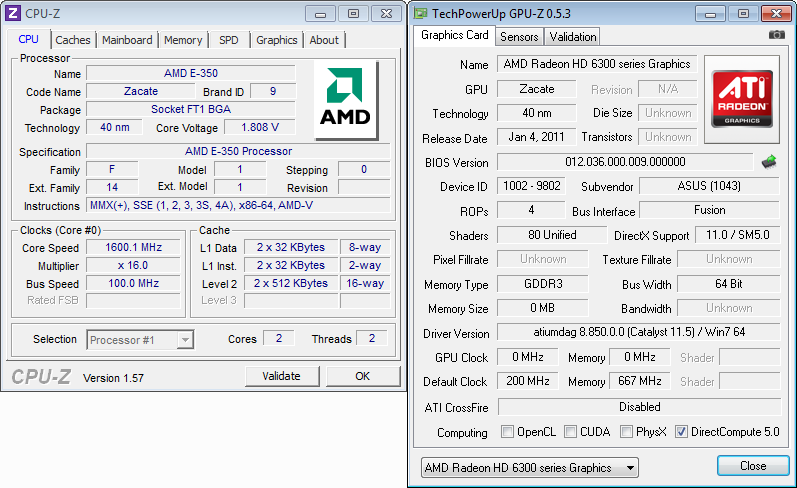The Brazos Round-Up: Eight AMD E-350-Based Motherboards
AMD’s Brazos platform, driven by the Zacate APU, offers a lot of performance per watt. It comes up short on features, though. Eight manufacturers try to change that perception by adding slots, controllers, and even overclocking in a couple of cases.
Asus E35M1-I Deluxe
While ASRock uses reduced cost to increase value, Asus takes the opposite approach by focusing instead on features. An 802.11n Wi-Fi adapter fills a half-length mini PCIe slot, while two USB 3.0 controllers address both rear-panel and front-panel connectivity.
Asus even takes better-advantage of the A50M’s USB 2.0 ports by integrating a Bluetooth adapter—perfect for transferring media to portable devices—and Asus even exploits all of the chipset’s SATA 6Gb/s ports by adding eSATA to five internal connections.
Only three of the six traditional analog audio connections are found on the rear panel, though jack-repurposing and front-panel connections should address the needs of most owners. Similarly, Asus ditches the VGA connector, instead supporting DVI-to-VGA adapter blocks through a DVI-I connection.
An extremely large and relatively heavy passive sink cools both the APU and chipset. Despite its promising size, the cooler isn't able to accommodate a fan. That's only worrying because the E35M1-I Deluxe is designed for overclocking, so we have to suspect potential will be limited by cooling in this case.
Overclocking usually requires additional power, so the E35M1-I Deluxe is one of the few boards in today’s roundup to use a 4-pin CPU power connector.
Unique to Asus is the MemOK button. Located between the memory slots and heat sink, pressing it forces lower memory speed and/or timings to help make poorly-programmed (usually overclock-rated) memory bootable.
Asus adds two Wi-Fi antennas to the E35M1-I Deluxe’s installation kit, but does not include a VGA adapter for its DVI-I connector, which is frankly fine with us. Though that type of monitor is typically below this product’s target market, we tested the connector with a “generic” adapter and confirmed that it does work.
E35M1-I Deluxe Tuning
We appreciate that Asus doesn’t cheat on its default APU clock, instead offering buyers the option of manually overclocking. The DDR3-1333 setting also works, but wasn’t automatically configured for our memory, in spite of its compatible SPD programming.
The APU reference clock is adjustable from 90 to 300 MHz, far beyond the capabilities of AMD’s E-350, even at relatively high voltage levels. We reached a fairly-impressive 1840 MHz final clock using a 115 MHz reference frequency.
And yet, we hit that speed with a relatively conservative voltage setting just 0.0875 V over stock. That’s not much more than Asus uses by default when set to Auto, and the maximum setting is 0.50 V over stock. Asus’ default over-voltage is likely to hurt this board’s standing in our efficiency chart, where default voltage is used exclusively.
The E35M1-I Deluxe has more than enough memory timing adjustments for the typical overclocker. Our memory is programmed to default to DDR3-1333 CAS 9, and the board automatically set the correct timings after we manually chose its data rate.
Get Tom's Hardware's best news and in-depth reviews, straight to your inbox.






